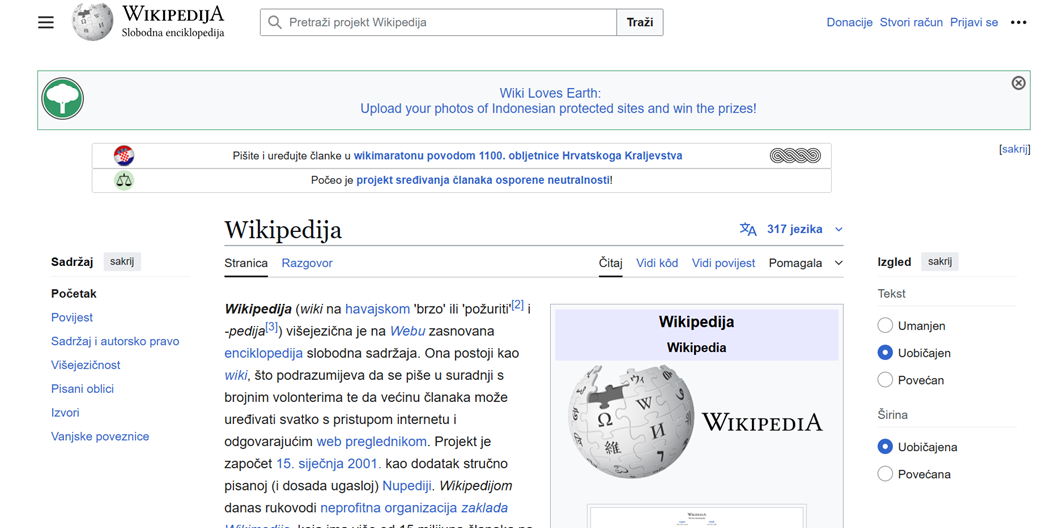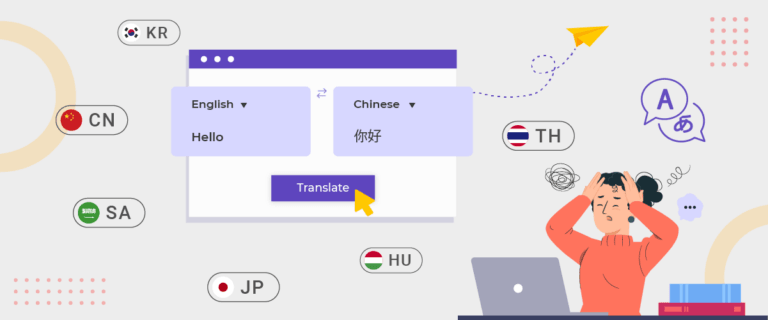Continuous localization for frequently updated websites plays an important role in ensuring global users receive timely and accurate content. When your website changes daily – whether it’s adding a new blog post, updating a product page, or launching a new feature, relying on manual translation processes can slow you down. That’s why continuous localization helps you keep every version of your site, in every language, up-to-date without missing a beat.
In this article, we’ll walk you through how to implement continuous localization effectively from setting up your website structure to choosing the right tools and implementing best practices.
Why continuous localization matter for dynamic websites?

For websites that constantly update, ensuring every change is accurately reflected across all languages is critical. Continuous localization ensures your global audience sees the same updated content as your original-language users without delays. Here’s why this is important.
- Content is always changing: Dynamic websites often add or change pages, products, articles, or features. If the translation is not automatically updated, users from other countries will see an old or incomplete version.
- More consistent user experience: Users from different countries expect the same experience. Slow localization can make a site feel unprofessional or confusing.
- Reduces manual team burden: Without continuous localization, teams have to manage updates manually, which is error-prone and time-consuming, especially if updates are frequent.
- Improves multilingual SEO: Quickly translated and indexed content helps sites appear in local search results faster.
What is website that needs to be updated frequently?

Some websites aren’t static, they change almost every day or even every hour. These are known as frequently updated websites, and they often deal with time-sensitive content, user-driven updates, or rapid business needs. For these types of sites, having an efficient and automated localization process is crucial to ensure that global users receive the same timely information as your main audience.
Now, let’s explore some common types of frequently-updated websites and why localization plays a vital role in each.
News portals
News websites publish content in real-time, from breaking news to daily updates and opinion pieces. Speed is everything in this space. If you’re targeting a global audience, your international readers expect to access the same news as quickly as local readers. Without proper localization, they may miss crucial updates or feel left out of important events.
Continuous localization ensures that headlines, summaries, and articles are quickly translated and published in multiple languages. This helps build trust and engagement with non-English-speaking audiences, especially when covering global topics, crises, or region-specific issues.
An example of real-time content on BBC News that is available in Turkish.

E-commerce sites
E-commerce online stores frequently update product listings, descriptions, pricing, promotions, and seasonal campaigns. Imagine launching a flash sale in English but not making it available in other languages at the same time. This creates a poor customer experience and missed sales opportunities.
By localizing these updates continuously, you ensure that every customer, no matter their language, sees accurate and current information. This is especially important for trust, conversion rates, and maintaining a consistent shopping experience across markets.
Here is an example of an e-commerce store that is available in French.

MOOCs website
Massive Open Online Course (MOOC) platforms are constantly publishing new courses, video content, and learning materials. Learners from all over the world rely on translated content to fully understand course material and complete lessons effectively. Platforms such as Coursera, edX, and Khan Academy often add new courses every week and collaborate with global universities or institutions.
Without regular localization, participants from different countries can struggle to understand the material due to language limitations or translations that have not been updated. With continuous localization, video subtitles, course descriptions, and exam questions can be instantly available in multiple languages as content is released. This makes the learning experience more inclusive and equal for all users, no matter where they are.
The following is an example of an MOOC website available in Spanish.

Real estate listings
Real estate websites change frequently as new properties are added, prices shift, or listings are taken down. For users in different regions or countries, understanding the details in their native language is crucial, especially when dealing with large financial decisions.
With continuous localization, property descriptions, legal terms, and availability updates can be kept current across all languages. This helps maintain trust and speeds up the decision-making process for international buyers or renters. The following is an example of a real estate website that is available in Deutsch.

Blog website
Blogs, especially in fast-evolving fields like technology, are constantly updated with new articles, reviews, and trend discussions. A great example is Gizmodo, a tech blog that publishes in multiple languages including Portuguese, French, German, and Spanish, in addition to English. In this case, we’re showing the Portuguese version of Gizmodo to highlight how localized content helps readers stay informed and engaged in real-time tech developments, regardless of language barriers.

Wiki sites
Community-driven platforms such as Wikipedia are classic examples of frequently-updated websites. Articles are continuously revised, expanded, or corrected by global contributors. Wikipedia is localized into hundreds of languages, including regional ones like Croatian, as seen in the screenshot. Without a reliable localization process, much of this valuable global knowledge would remain inaccessible to non-English speakers.

Getting your website ready for continuous localization

Before you can implement continuous localization optimally, the first step is to make sure your website is ready for it. While many teams focus on tools and automation, the foundation lies in your content structure, content management system (CMS), and how you manage content changes over time.
In this section, we’ll look at how to set all of that up so that the localization process runs smoothly without slowing down your team.
Structuring content for easy translation
The way you organize content on your website has a huge impact on how easily it can be translated. If all the text is mixed up in the code or not clearly separated, then a translation team – or even an automated system, will have a hard time extracting it. A good structure is when each piece of content (title, description, button, paragraph) can be accessed and translated separately.
For example, if you’re using a website builder or CMS, make sure each text component is in a different module. Also, avoid using compound text such as “Buy now on {Product Name}” as this structure is prone to errors when translated into other languages that have different sentence structures.
A translation-friendly structure not only helps the localization team, but also makes it easier to integrate with the plugin or Translation Management System (TMS) that will be used. As a result, the translation process can be faster, more accurate, and more reliable in the long run – especially when you’re operating in multiple markets.
Choosing the right CMS and localization-friendly plugins
The CMS (Content Management System) you use will determine the ease of the localization process. Not all CMSs are designed with built-in multi-language capabilities, and some may require additional plugins to support automatic and continuous translation. Choosing a CMS that is flexible and supports integration with localization plugins is an important investment for long-term scale.
For example, WordPress is a popular CMS that easily combines with translation plugins to efficiently manage multi-language sites. Meanwhile, for enterprise scale, CMSs like Contentful or Drupal provide great flexibility in organizing modular content and API systems that connect with Translation Management Systems.
Choosing the right CMS and plugins makes it easy to maintain, and scalable as the amount of content grows.
Connecting to a Translation Management System (TMS)

The Translation Management System (TMS) serves as the link between the original content and its translated version. It helps manage all elements of the translation, from which text needs to be translated, to who translates it, to how the results are sent back to the website. Connecting your CMS to a TMS means you can automate the translation workflow from start to finish.
A TMS usually comes with features such as translation memory, glossary, and real-time integration to the website platform. For example, when a new page is uploaded to the CMS, the system will automatically detect the new content and immediately send it for translation. Once it’s done, the translation is automatically posted on other language pages – without any manual intervention.
This is important if you want to avoid errors, duplication of work, or delays in releasing content to different countries.
Automating content detection and language deployment
One of the key advantages of continuous localization is the ability to automatically detect and translate content. Instead of relying on your team to notify you when new content is created, the system will track changes in real-time and instantly prepare them for the translation process. This saves a lot of time, especially if you manage hundreds of active pages.
For example, if you run a news or e-commerce blog that adds new products daily, automation allows any changes to be instantly sent to the TMS and the results applied to a multilingual site in minutes.
In addition to detection, deployment to multiple languages also needs to be automated. This means that when the English version is updated, the French, Japanese or Indonesian version is automatically updated as well. This ensures all users, in all countries, get the same experience at the same time.
Managing updates and version control efficiently

A website that is constantly evolving means that its content is also always changing. For this reason, it is important to have a system that is able to manage content versions properly. Version control isn’t just for developers, it’s also important for content teams and translators so they know when text is changed, which parts need to be updated, and how to make sure all versions stay in sync.
For example, if you change one paragraph on a feature page, the version control system will tell you only that section needs to be retranslated. This is more efficient than having to translate the entire page from scratch.
Best practices for localizing frequently updated websites

Once the website is ready and the basic localization workflow is established, the next step is to make sure the process is efficient and scalable. In this section, we’ll discuss some best practices that you can implement to keep the localization process running smoothly even as content changes.
Use automation to detect and translate new content

Relying on manual processes to detect new content is very inefficient, especially if the website is updated daily. Automation allows the system to monitor any changes, whether it’s a new article, button text change, or product description, and instantly send it for translation.
A best practice example is to use a translation plugin that automatically detects changes to the page and applies the translation immediately. That way, your team doesn’t have to notify you when content changes or manually copy the text. This saves time and prevents delays in publishing multilingual content.
Keep your content modular and translation-friendly
Content that is written or organized in a modular way is much easier to translate and manage. Modular here means that content is divided into small components that can be reused and managed separately, for example, headings, call-to-actions, short descriptions, and visual captions.
Avoid using compound text or dynamic phrases that are difficult for machines or translators to understand. This not only speeds up the process, but also minimizes translation errors and maintains consistency across languages.
Leverage translation memory and glossaries
Translation Memory (TM) and glossaries are helpful in maintaining translation consistency, especially when you frequently update content that uses the same terms or phrases repeatedly. TM stores previous translations and automatically suggests or applies the same translation if a similar phrase appears again.
For example, if you manage a SaaS site and have technical terms like “user dashboard” or “real-time sync,” you don’t want these terms translated differently every time they appear. With TMs and glossaries all translators (or translation engines) will follow a set standard.
Schedule regular syncs between content and translation systems

Regular synchronization between the CMS and translation system helps keep all language versions up-to-date. This is important because sometimes small changes on the page – such as word corrections or price updates are often missed if there is no automatic or scheduled sync process.
Schedule a sync daily or whenever there is a new deployment. For example, suppose you update your blog or feature every Friday. In that case, the system will automatically check for new content, send it to TMS, and then apply the translation to other language versions on the same day. This keeps the user experience consistent across languages and prevents delays in global publication.
Implementing continuous localization with Linguise translation

If you want to implement continuous localization without the hassle, Linguise automatic translation can be the right solution. This platform allows your website to be automatically translated into multiple languages in real time, while also giving you the flexibility to control translation results as needed.
Here are the key features of Linguise that are highly relevant for frequently updated websites.
- Automatic content detection: Linguise automatically detects new or changed content on your website and translates it immediately. This eliminates the need to manage separate files or go through a manual process every time an update occurs.
- Rules-based translation: You can specify which parts of the website should not be translated based on keywords, links, or specific HTML elements. This is especially useful for maintaining consistency in technical terms, brand names, or sections that must remain in the original language.
- Front-end live editor: This feature allows you and your translation team to edit translations directly on the live webpage. Revisions can be made in real context and collaboratively, without needing backend access.
- Multi-language SEO optimization: Linguise helps ensure your multilingual content is search engine optimized. It automatically generates hreflang tags, translates metadata, and sets SEO-friendly URL structures for each language.
- Real-time deployment across languages: Once content is translated, it is instantly displayed on all language versions of your site without delay. This ensures users across different countries get access to the latest content at the same time.
With these features, you can maintain the quality and speed of localization on dynamic websites without having to build a system from scratch. Linguise offers both simplicity and control, helping you scale your website globally with ease.
Conclusion
Continuous localization for frequently updated websites ensures that any content changes are accessible to users without delay. With a high frequency of updates, such as on news sites, e-commerce, or educational platforms, an automated translation process helps maintain consistency and cross-language user experience.
You can use Linguise to make it easier to implement. Features like automatic content detection, rules-based translation, and a live editor make localization faster, more accurate, and easier to manage. It’s time to switch to an efficient localization solution. Try Linguise today and better reach a global audience.




